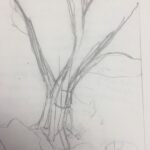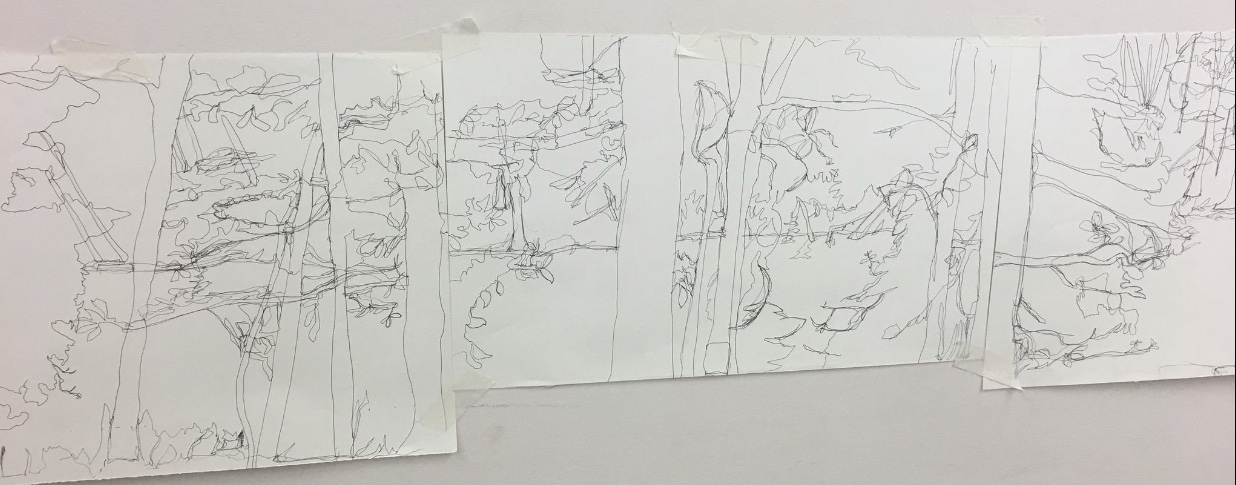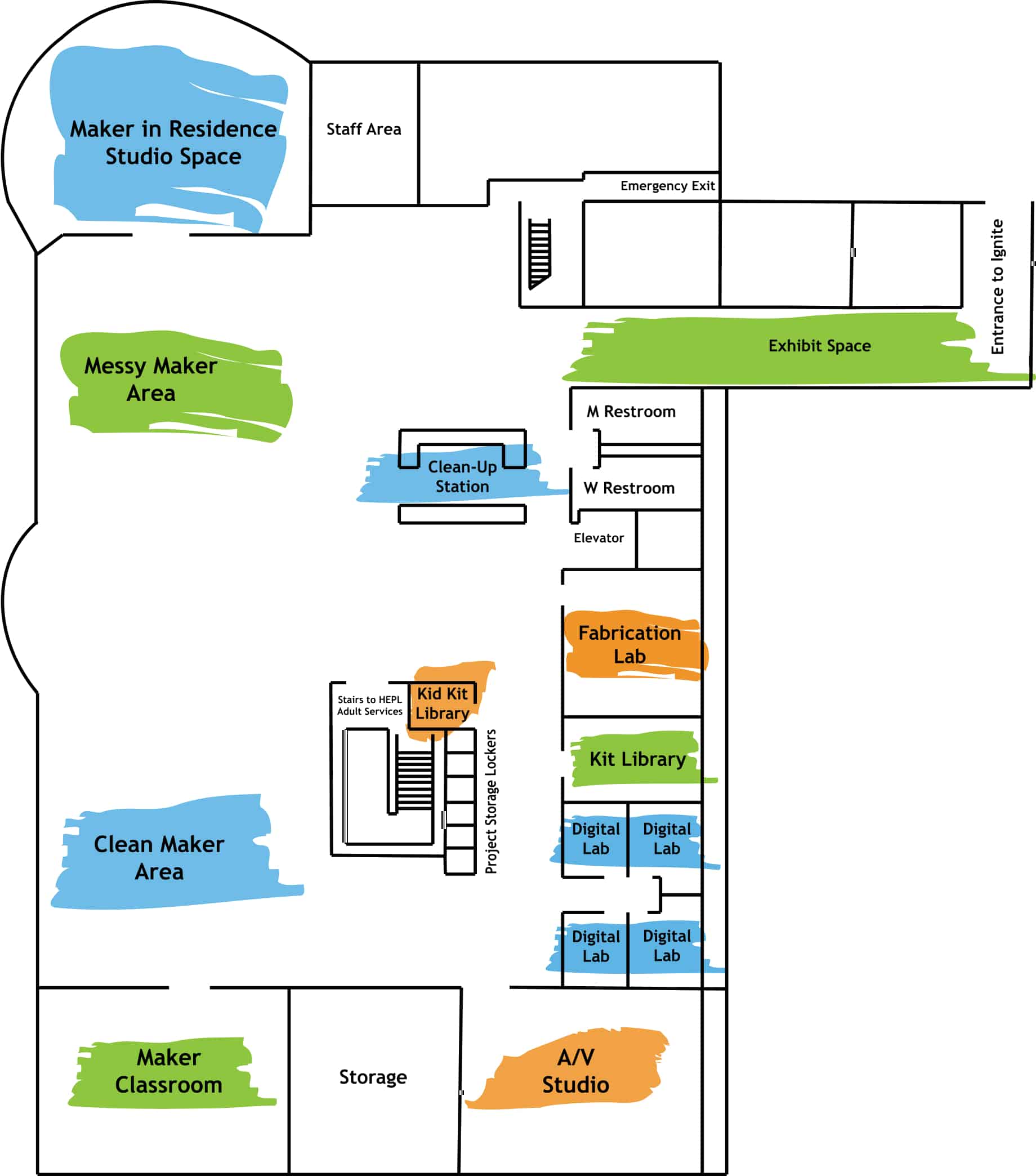By Sydney Brink
It’s warming up outside! We can start participating in hiking, biking, and so much more in the spring sunshine. You see spring flowers popping up and leaves budding on trees, so you pull out your phone, snap a picture, and realize your camera can’t quite capture the landscape as you see it. That’s where plein air drawing comes in.
What is plein air?
Welcome to part one of our three-part plein air series. During this series, you’ll gain confidence in creating outdoors, as you learn about contour drawing, shading and composition, and color mixing. “En plein air,” or plein air painting, is a French term that simply means painting outdoors. Taking your creative process outside is a great way to practice some of the essential concepts of art while enjoying nature, but the process can be daunting. The good news is you don’t have to have a Monet-style setup to benefit from plein air.
Getting Started
Today we’ll begin simply with plein air drawing. All you need is a pen and paper. Drawing a landscape with just a pen or pencil is the most lightweight way to get creative outdoors. You can hike for miles without a huge pack of supplies weighing you down, so you can find less traveled by scenery!
After you’ve chosen a location, notice the shapes you see around you. Shape is the most important concept of art when you’re practicing with only pen and paper. Contour drawing is drawing the outline—or “contour”—of your subject. If you’re a novice or a pro, contour drawing is a great way to start identifying and seeing which shapes make the landscape you see in front of you pop.
 From here, use your pen to start drawing the shapes you see without looking at your paper. Drawing “blind” will help you focus on drawing what you see, instead of whether or not your drawing looks “right.” Find the differences between negative spaces and the shapes that make them! Landscapes are full of intimidating shapes like pine trees, leaves, logs, rocks, sky, flowers. By drawing only the outline of these shapes, you break them down into something more manageable.
From here, use your pen to start drawing the shapes you see without looking at your paper. Drawing “blind” will help you focus on drawing what you see, instead of whether or not your drawing looks “right.” Find the differences between negative spaces and the shapes that make them! Landscapes are full of intimidating shapes like pine trees, leaves, logs, rocks, sky, flowers. By drawing only the outline of these shapes, you break them down into something more manageable.
For a bigger project, grab three large sheets of paper—11”x17” would work great—and start your landscape on the right most side of it. Work large and draw your landscape all the way across the three pages one at a time. Tape them together when you get back indoors where you think they line up and enjoy your landscape!

Don’t forget to practice! Repetition will help you gain confidence in your pen strokes. Practice will also impact how you think about negative space and shape.
Check back here for more ways to get started in plein air drawing and painting. Also look out for Ignite Studio’s virtual classes on contour drawing and join our community of makers.


